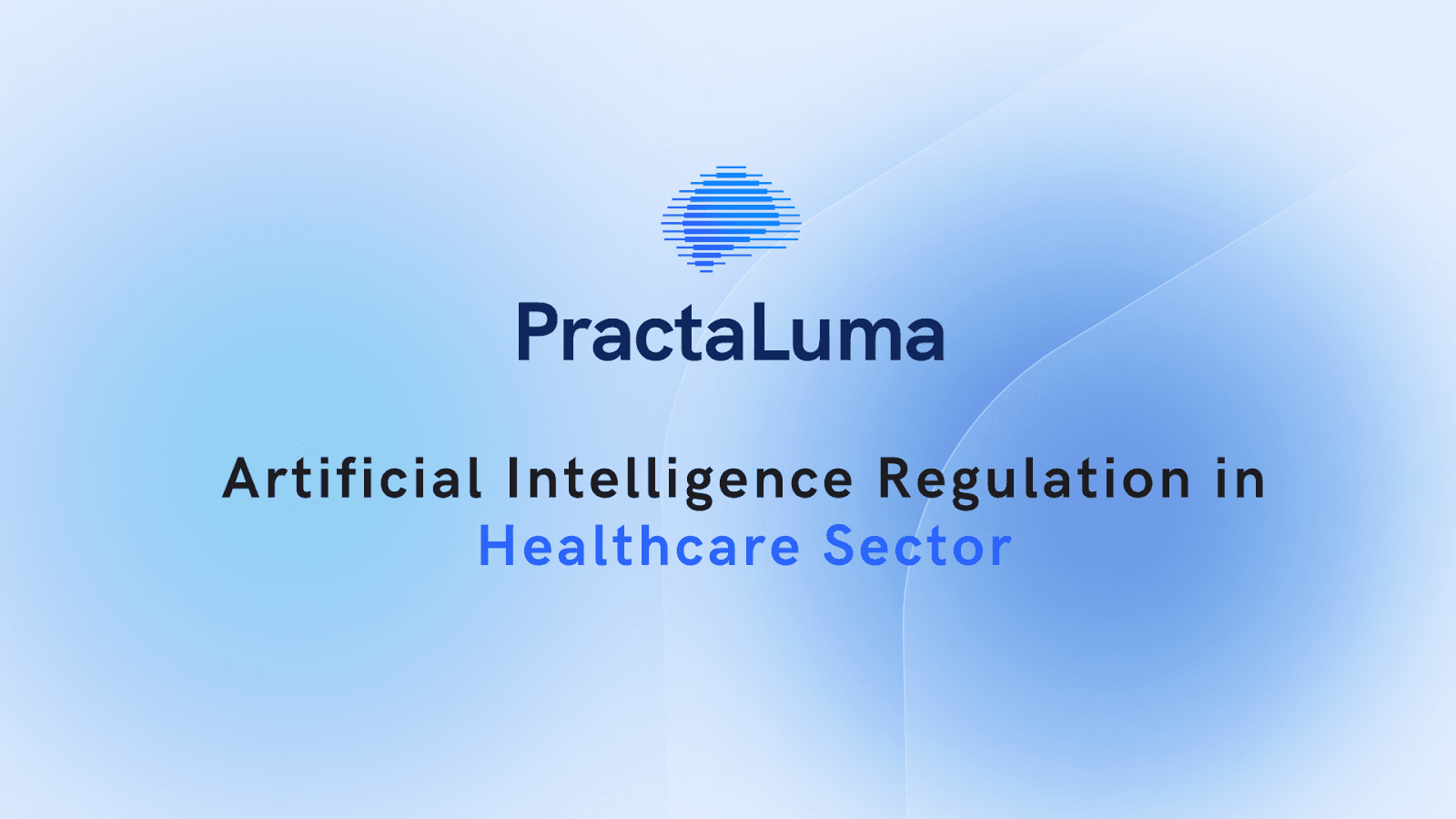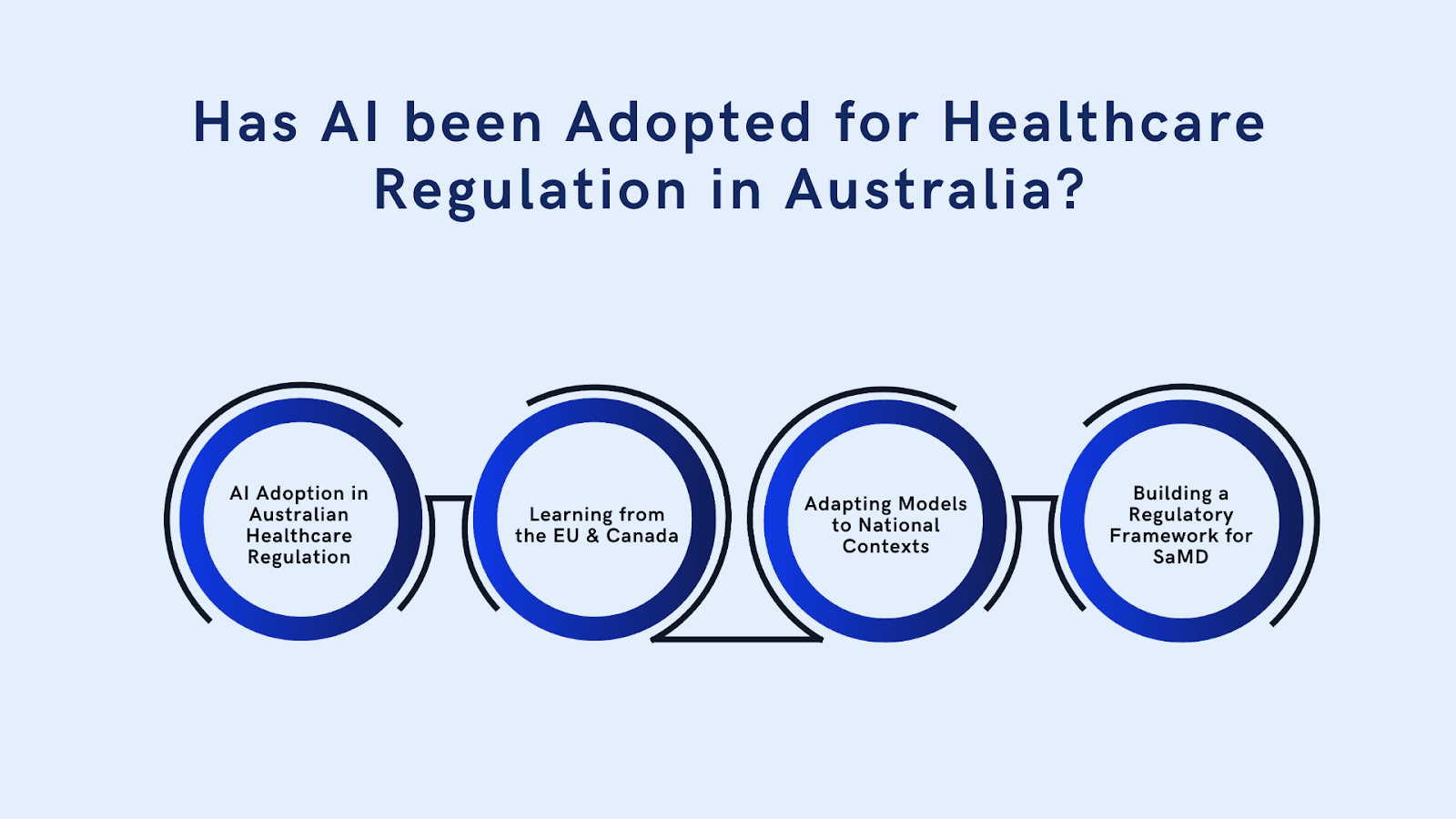
5 May 2025
Artificial Intelligence Regulation in Healthcare Sector
Regulating Artificial Intelligence in the Healthcare Sector
According to Accenture, AI regulation in healthcare is projected to save the global economy up to $150 billion annually by 2026, improving diagnostic accuracy and patient outcomes across various medical fields.
As AI technologies continue to evolve, several challenges remain, particularly around regulation, transparency, and governance. AI in healthcare is still largely unregulated, leaving room for safety concerns and inconsistent practices.
The lack of transparency in how AI algorithms make decisions raises doubts about trust and accountability. Additionally, the absence of comprehensive governance frameworks means there’s no unified approach to ensure ethical concerns are addressed adequately.
Addressing these issues is critical to unlocking AI's full potential in healthcare while safeguarding patients' health and privacy. In this article, we shall explore AI Regulation in Healthcare and the key principles involved in AI regulation.
What are the Key Principles for AI Regulation?

A clear set of principles must guide AI technologies in healthcare development and implementation to ensure their effectiveness and trustworthiness. These principles help balance innovation with patient safety, fairness, and ethical standards.
1. Ensuring Safety and Quality of Care
As a healthcare expert, your foremost priority is the safety and quality of care provided to patients. AI systems must undergo rigorous testing to ensure they perform accurately and reliably in clinical settings. Continuous monitoring is also necessary to identify and address potential risks in real-time.
2. Protecting Patient Data Privacy
AI systems often rely on large datasets, many of which contain sensitive patient information. Stringent regulations must protect this data from breaches or misuse. Privacy standards should be upheld throughout the data collection, storage, and processing stages to maintain trust and comply with laws like HIPAA in the U.S.
3. Maintaining Medical Ethics in AI Applications
AI tools in healthcare must align with your core medical ethics, including principles like beneficence (doing good for the patient), non-maleficence (avoiding harm), and respect for patient autonomy. Regulatory frameworks should ensure that AI applications are designed and used in ways that prioritise patient welfare and informed consent.
4.Eliminating Bias to Achieve Equity
AI models can inadvertently perpetuate bias if they are trained on skewed datasets. To promote equity, regulatory measures should focus on eliminating biases based on race, gender, socioeconomic status, and other factors that could affect healthcare outcomes. AI systems must be designed to serve all patient populations fairly and impartially.
5. Transparency in AI Algorithm Development
Transparency is key to building trust in AI systems. As medical experts and Regulators, you should require that AI developers provide clear explanations of how algorithms work, how decisions are made, and what data is used. This will help you understand the rationale behind AI-driven recommendations and interventions.
6. Shared Decision-Making Responsibility Between Patients and Professionals
As Mental Health experts, your role in monitoring doesn’t get substituted. AI should support, not replace, your expertise and judgment. Regulations should emphasise the importance of shared decision-making, where patients are informed, involved, and empowered to make choices about their care. AI tools should assist you, but the final decision should always consider the patient's values and preferences.
Together, these principles form a strong foundation for responsible AI regulation in healthcare. They ensure that AI's benefits are realised while minimising risks and protecting patient rights.
Has AI been Adopted for Healthcare Regulation in Australia?

AI has started to be adopted for healthcare regulation in Australia. However, it is still in the early stages and can benefit from examples of already adapted regulations in other regions. Countries like the ones in the European Union and Canada offer valuable insights into AI regulation in healthcare.
1. AI Adoption in Australian Healthcare Regulation
AI is being gradually adopted in Australia's healthcare regulations to enhance efficiency and safety. Key uses include improving medical device assessments, aiding in personalized treatments, automating clinical trials, supporting data-driven decision-making, enhancing monitoring of healthcare services, managing drug approvals, and improving patient safety. These technologies aim to streamline regulatory processes and optimise healthcare outcomes while ensuring compliance and safety standards.
2. Learning from the EU and Canada
The EU's AI Act provides a robust framework for AI in healthcare globally, focusing on risk-based classification and patient safety. Canada’s Directive on AI in Healthcare balances data privacy with ethical use, offering a strong model for integrating AI while protecting patient rights.
3. Adapting Models to National Contexts
While international frameworks provide guidance, each country must tailor regulations to its healthcare system and needs. Nations with less developed healthcare infrastructure may focus on building foundational regulatory structures before adopting more advanced AI guidelines.
4. Building a Regulatory Framework for SaMD
As SaMD, especially AI-driven technologies, becomes more prevalent, a strong regulatory framework is essential for safety and effectiveness. SaMD includes software for medical purposes, like diagnosis or treatment management, classified by risk to guide regulation. The FDA’s action plan ensures the safe evolution of AI-based SaMD. AI regulations must align with existing healthcare standards, with the WHO emphasising ethical principles in AI use in healthcare.
As AI continues to reshape healthcare, the World Health Organization (WHO) emphasises the importance of ethical principles and safety in its integration. Let’s explore the WHO’s perspective on guiding AI use in medical applications.
What Does the WHO Think About AI in Healthcare?
The World Health Organisation (WHO) has outlined key principles to guide the safe and ethical use of AI in healthcare:
1. Balance Between AI Benefits and Potential Risks
WHO emphasises the importance of carefully weighing AI's potential to improve healthcare against the risks it may pose, particularly in patient safety and data security.
2. Need for Transparency and Thorough Documentation
WHO stresses the necessity of transparency in AI development. Clear documentation on how AI systems operate, make decisions, and handle data is key to building trust and accountability in healthcare settings.
3. Focus on Risk Management and Human Intervention
WHO advocates for strong risk management strategies, ensuring AI systems are continuously monitored. Human oversight should remain central to prevent errors, with professionals stepping in when needed to provide the best outcomes for patients.
WHO highlights the importance of risk management and human oversight in AI systems to ensure patient safety.
Frequently Asked Questions (FAQs)
1. What regulations govern the use of AI in Australia's healthcare system?
A: In Australia, AI in healthcare is primarily regulated under the Therapeutic Goods Administration (TGA) framework, which assesses AI as a medical device. Compliance with standards like the Privacy Act 1988 and the Australian Digital Health Agency's (ADHA) guidelines is also crucial.
2. How does the Therapeutic Goods Administration (TGA) regulate AI as a medical device?
A: The TGA categorises AI systems as software-based medical devices and evaluates them based on their intended use, risk level, and compliance with international standards like ISO 13485 for medical device quality management systems.
3. What are the privacy implications for AI in Australian healthcare?
A: AI systems must adhere to the Australian Privacy Principles (APPs) under the Privacy Act 1988. This includes ensuring patient data is securely stored, used only with consent, and safeguarded against breaches or unauthorised access.
4. Are there specific concerns about bias in AI used in Australian healthcare?
A: Yes, bias can arise from datasets that are not representative of Australia's diverse population, including Indigenous Australians. Regulators emphasise the importance of training AI systems on inclusive datasets to ensure equitable healthcare outcomes.
5. How does AI regulation in healthcare align with Australia’s ethical AI framework?
A: Australia’s AI Ethics Framework, developed by the Department of Industry, Science, and Resources, guides ethical AI use. In healthcare, this means ensuring systems are transparent, accountable, and designed to prioritise patient welfare and fairness.
6. What support is available for healthcare providers adopting AI technologies in Australia?
A: The Australian Government and organisations like the ADHA offer resources, including guidelines, grants, and training, to help healthcare providers integrate AI while ensuring compliance with regulatory and ethical standards.
Conclusion
To conclude, developing effective AI regulations requires collaboration among governments, healthcare professionals, technologists, and regulators. Tailoring regulations to fit the unique needs of different healthcare systems and patient populations will ensure that AI is used responsibly and equitably.
The future of AI regulation in healthcare looks promising, with more comprehensive frameworks likely emerging as technology evolves. Continuous updates and improvements to regulations will be needed to keep pace with innovation, ensuring that AI remains a valuable tool in healthcare without compromising patient trust, privacy, or well-being.
Platforms like PractaLuma ensure Australian privacy, and their HIPAA-compliant platform ensures patient data protection. Featuring end-to-end encryption and multi-factor authentication for secure access, it ensures that your use of its AI note-making abilities is in trustworthy hands. Book a Call with PractaLuma Here!